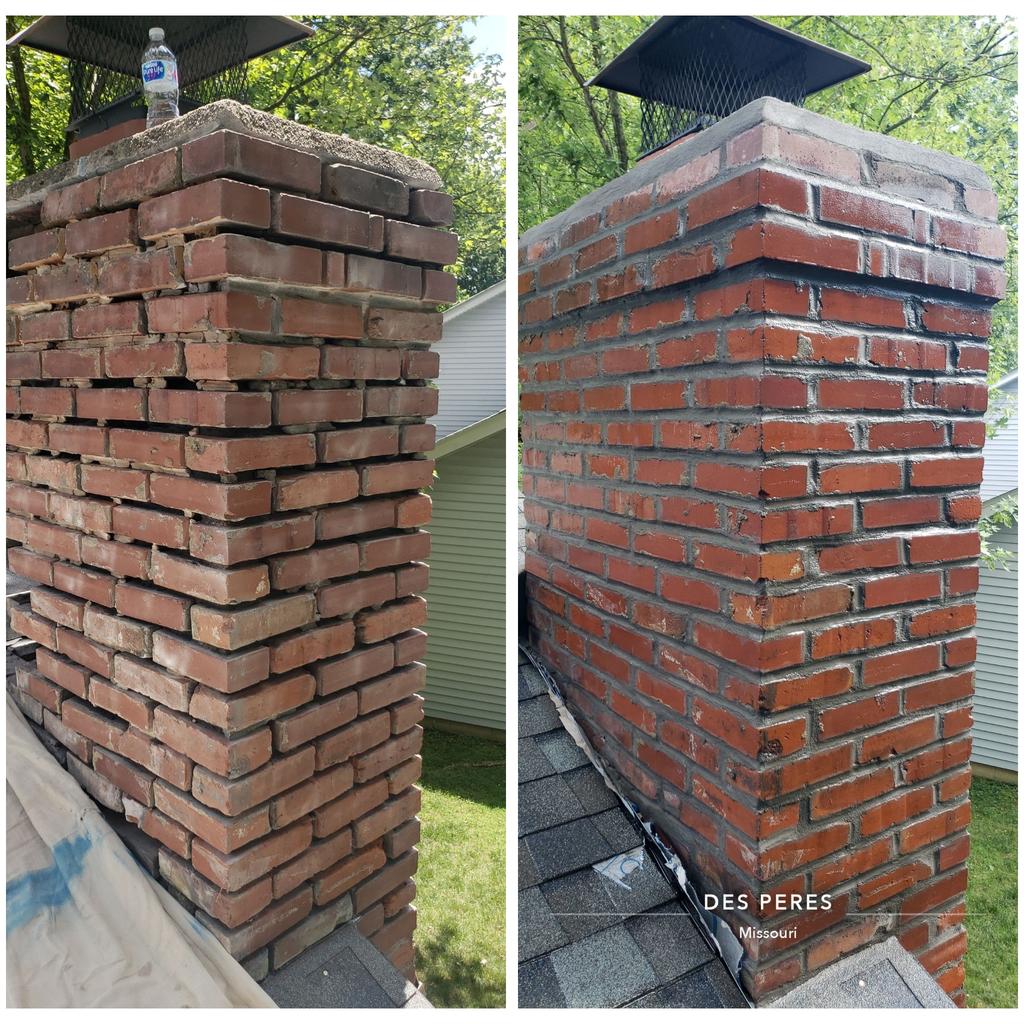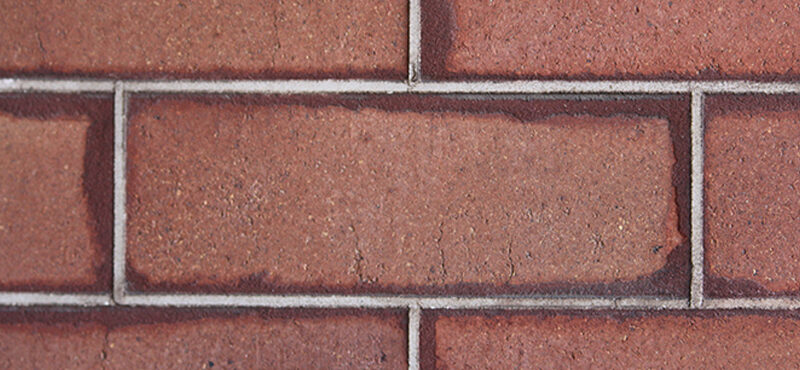Raul's Tuckpointing St. Louis MO: Your Premier Option for Masonry Quality
Wiki Article
Boost the Beauty and Durability of Your Brickwork With Tuckpointing
Over time, the mortar that holds those blocks together can deteriorate, leaving your structure at risk to harm and detracting from its aesthetic allure. Anxiety not, for there is a service that can recover both the appeal and longevity of your brickwork: tuckpointing. In this discussion, we will discover the basics of tuckpointing, its benefits, the distinction between tuckpointing and repointing, the process itself, and the crucial methods for caring and preserving for tuckpointed brickwork.The Basics of Tuckpointing
Tuckpointing is a knowledgeable strategy utilized to fix and improve the appearance and architectural stability of brickwork. It involves the procedure of removing shabby mortar joints and changing them with fresh mortar. The term "tuckpointing" refers to the practice of utilizing 2 different colors of mortar to create the impression of great joints, offering the brickwork a much more polished and cosmetically pleasing appearance.
The initial action in tuckpointing is to very carefully evaluate the problem of the brickwork. This involves inspecting the mortar joints for indicators of deterioration, such as breaking, collapsing, or missing mortar. Once the issue locations have actually been recognized, the old mortar is thoroughly eliminated making use of specialized devices, such as a grinder or chisel, while ensuring that the blocks themselves stay undamaged.
After the old mortar has actually been removed, the following step is to prepare the joints for fresh mortar. This generally includes cleansing out any kind of debris or loose product and wetting the joints to ensure proper attachment. An experienced tuckpointer utilizes a directing trowel to meticulously fill the joints with fresh mortar, making sure to produce a flush and consistent surface.
Advantages of Tuckpointing
Improving both the longevity and look of brickwork, tuckpointing deals numerous noteworthy benefits for homeowners and residential property owners alike. By replacing shabby mortar joints, tuckpointing stops moisture from seeping right into the brickwork, which can lead to structural damages over time.Over time, mortar joints can become cracked, discolored, or blemished, taking away from the overall look of the brickwork. Tuckpointing involves meticulously getting rid of the harmed mortar and replacing it with fresh mortar of a different color.
In enhancement to improving the longevity and appearance of brickwork, tuckpointing can likewise enhance the worth of a property. Properly maintained brickwork is viewed as a desirable function by possible buyers and can considerably boost the curb allure of a residential property. This can result in a higher market price and a quicker sale when the time pertains to put the residential property on the market.
Tuckpointing Vs. Repointing: What's the Distinction?

To compare tuckpointing and repointing, it is essential to understand the vital distinctions between these 2 approaches of brickwork restoration. While both strategies intend to maintain the architectural integrity and aesthetic allure of brickwork, they vary in their strategy and implementation.
Tuckpointing is a meticulous procedure that includes using 2 various shades of mortar to produce the impression of great joints. This strategy is mainly used to boost the visual allure of brickwork by creating the appearance of well-crafted and well-maintained joints. The tinted mortar is thoroughly applied and formed to match the color and account of the initial mortar, providing the impression of accuracy and workmanship.
On the other hand, repointing is a more simple procedure that includes eliminating broken or worn-out mortar from the joints and replacing it with fresh mortar. The main objective of repointing is to recover the structural integrity of the brickwork by making sure appropriate bonding and securing between the blocks. Unlike tuckpointing, repointing does not entail making use of colored mortar or the production of an attractive effect.
The Refine of Tuckpointing
The application of 2 various shades of mortar to develop the impression of great joints is a careful process called tuckpointing. This technique entails eliminating scrubby mortar joints and changing them with new mortar to enhance the look and structural stability of the brickwork. The procedure of tuckpointing can be separated into several steps.First, the old mortar is carefully eliminated utilizing specialized devices such as knives and mills. It is essential to get rid of the mortar to a sufficient depth to guarantee a solid bond with the new mortar.
Following, the joints are extensively cleansed to get rid of any type of particles or dust. This helps to develop click now a clean surface for the brand-new mortar to comply with.
Once the joints are cleansed, a thin layer of brand-new mortar is related to the joint utilizing a tiny aiming trowel. This preliminary layer, called the "pointing up" mortar, is generally the same color as the existing mortar.
After the initial layer has actually been used, a second layer of mortar is applied on top of it. This 2nd layer, called the "fillet" mortar, is a different shade and is very carefully formed to develop the illusion of a great joint.

Caring and maintaining for Tuckpointed Brickwork
Once the tuckpointing procedure is finished, appropriate maintenance and care are necessary to maintain the boosted charm and resilience of the brickwork. This maintenance not only makes certain that the tuckpointed areas stay intact and functional however likewise helps to avoid any potential damage to the overall structure.One of the crucial facets of preserving tuckpointed brickwork is regular cleaning. This includes removing any kind of dirt, particles, or moss that may build up externally of the bricks. A low-pressure power or a soft brush washing machine can be utilized for this function. It is necessary to prevent utilizing any type of rough chemicals or rough tools that can possibly damage the mortar or the bricks themselves.
In addition to cleansing, it is necessary to evaluate the tuckpointed areas regularly. This enables the very early discovery of any kind of browse around here indicators of deterioration or damages. Any kind of cracks, loose mortar, or indications of water damage must be addressed promptly to stop more degeneration.
In addition, ensuring correct water drainage around the brickwork is crucial. Water pooling or inappropriate water drainage can result in moisture infiltration, which can compromise the mortar and create architectural damages. Cleaning gutters and downspouts regularly and making sure that they are effectively routed far from the brickwork can aid avoid these concerns.
Finally, it is advised to speak with a professional tuckpointing specialist for normal repair and maintenance. Their experience and experience can make sure that any essential fixings are done properly, preserving the integrity and longevity of the tuckpointed brickwork.
Conclusion
Finally, tuckpointing is a valuable technique for enhancing the appeal and durability of brickwork. It uses numerous advantages, such as enhancing the architectural honesty of the masonry and protecting against wetness penetration. Tuckpointing entails the removal and substitute of shabby mortar, leading to a uniform and tidy look. By correctly keeping and caring for tuckpointed brickwork, house owners can ensure its durability and continue to enjoy its visual charm.
It involves the process of getting rid of tatty mortar joints and changing them with fresh mortar. Raul's Tuckpointing St. Louis MO.After the old mortar has actually been gotten rid of, the next step is to prepare the joints for fresh mortar. Tuckpointing involves meticulously eliminating the harmed mortar and replacing it with fresh mortar of a different color. The colored mortar is meticulously applied and shaped to match the shade and profile of the original mortar, giving the impact of precision and craftsmanship
Report this wiki page